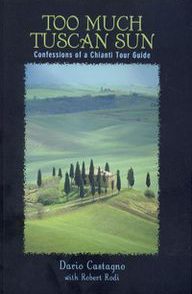Living in Florence, I constantly stumble across more of the city’s famous sons. With Il Genio Fiorentino in full flow, it is not surprising that a few more are coming out of the woodwork. How many of you knew that Pinocchio, the wooden boy whose nose grows when he lies, was born in Florence? Probably quite a few of you, but it was news to me. Le Avventure di Pinocchio was published between 1881 and 1883 by Carlo Lorenzini (pen-name Collodi), a Florentine by birth. Florence has recently celebrated his work in a recent lecture at the Palazzo Vecchio and an exhibition of Pinocchio ceramics at the State Art Institute.
This interest in Collodi is not so much a revival as an ongoing celebration of a national treasure. Searching for evidence of the puppet’s following in Italy, you find the Pinocchio Park in the village of Collodi (his mother’s village from which he took his nom de plume), numerous websites (one of which allows you to write an email to Geppetto or the Blue Fairy), as well as a myriad of books, academic studies, films and merchandise.
If you only know the airbrushed Disney Pinocchio, the brilliant dark and light palette of Collodi’s classic is well worth returning to. Racy and hilarious, for Italians the story is wedged between cosy nostalgia for an old world, and the underlying darkness and brutality of the original story. Collodi was a journalist and satirist before he came to children’s books, writing after the turmoil of unification. Society was changing rapidly, and many felt the need for a united Italian cultural identity to be forged.
Children were intended to learn from Pinocchio’s adventures – he is terribly punished by fate when he is naughty, disobedient, greedy, spendthrift or lazy (most of the time). The story can also be seen as a more adult political and social allegory, with the dissolute rich represented by the wily, thieving cat and fox, and the rural poor played by the put-upon, ignorant donkey. Collodi showed the need for the new Italy to get ahead through hard work and study.
And it is dark. Collodi originally intended the story to end with Pinocchio being chased by the cat and fox, biting off the cat’s paw, and his enemies catching him and leaving him to choke, hanging from a tree. But the story was being serialised in a magazine for children, and a public outcry led to the story being completed with the impish marionette escaping to then overcome the weakness of his nature and find redemption.







